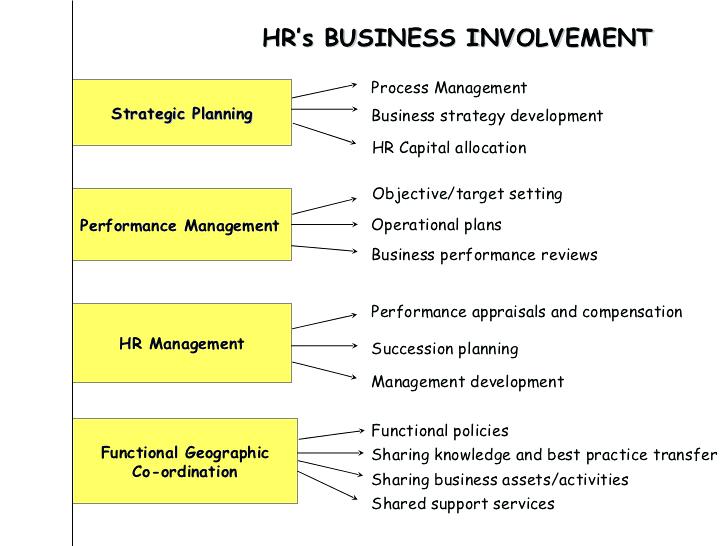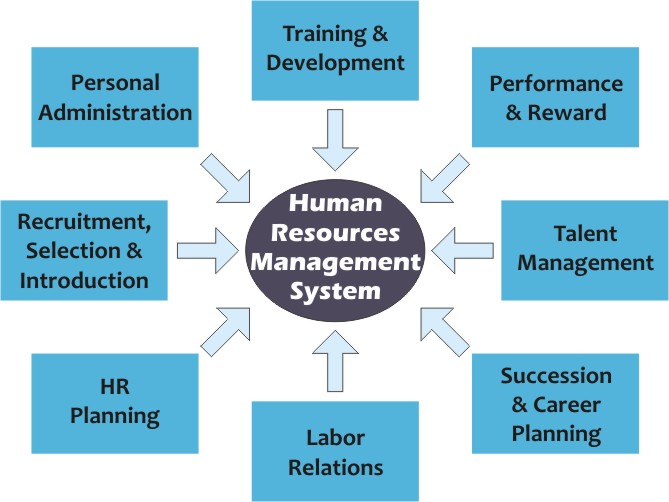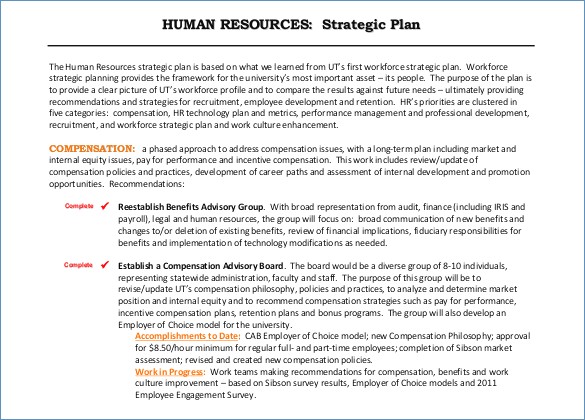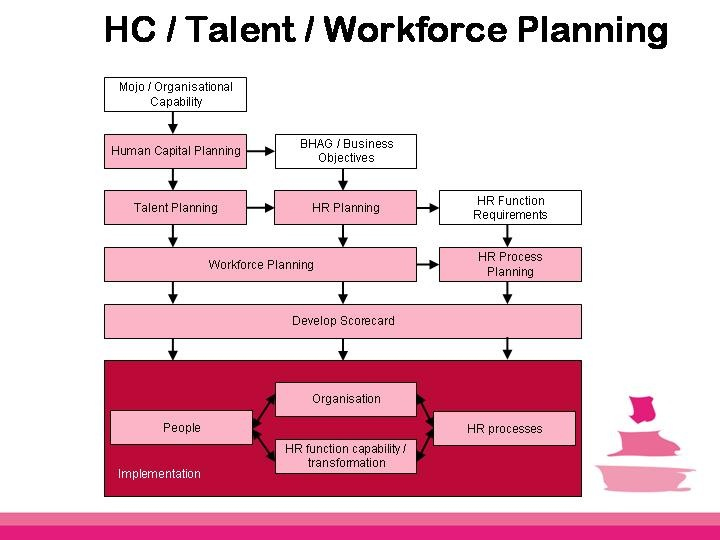7+ Human Capital Strategic Plan Examples to Download
Human capital is the most important element of any business organization. Even if companies believe they have the best products and the most advanced systems, but if they don’t have the right personnel to sell those products or use those systems, everything becomes useless. You may also see security strategic plan examples.
All types of businesses use a strategic plan. But unfortunately, these general plans are more focused on products and services, and not on human capital. If your organization has not shifted its focus yet on human capital, here are examples of human capital strategic plans that you can create and utilize for your own company when you will be making your own strategic plan.
HR Capital Continuum Example
Human Capital Business Involvement Example
Human Capital—Definition and Importance
Human capital basically refers to the employees of your company, and investing to recruit as well retain qualified personnel in your organization. Sometimes, businesses focus too much on products and services that they forget other aspects in running a business. You may also see strategic planning checklist examples.
Businesses are run by numerous people from different departments, all performing different functions yet all are also working toward the same company goals. Take for example the human resource, sales, and accounting departments working in sync with each other. The human resource department hires qualified applicants, then the sales department trains new employees to sell the company’s products, and then the sales or revenues will be recorded by the accounting department.
Basically, without people operating at an efficient rate on a consistent basis, companies would close down in a matter of months. The importance of human capital cannot be understated for any type of organization, not only for businesses but for all types of organizations. You may also like five-year strategic plan examples.
Human Capital Strategic Plan Example
Human Capital Action Plan Template Example
Investing in Human Capital
Investing in human capital only results to a win-win situation for any business organization. As previously mentioned, companies who have not prioritized human capital should immediately shift their focus on investing in it.
Investing in human capital is not cheap, and it requires a bulk of the company’s budget. But the payoff is much greater and companies will have a more transparent and strong culture in which all employees perform at high levels yet have strong relationships with each other. You may also see restaurant strategic plan examples.
Here are some tips on how you can invest better in human capital:
1. Diversify the recruitment process
Investing in human capital begins with the recruitment process. Hiring the right individuals is crucial for companies to have a competitive advantage and a better financial standing. One method in finding and hiring the best recruits is to diversify the recruitment process. You may also like community strategic plan examples.
Diversifying the recruitment process equates to two things: using different recruitment platforms and hiring applicants with multiple skill sets. Thanks to technology, the recruitment process has now drastically improved and it has been made easier to hire the best job seekers. You may also check out personal strategic plan examples.
The traditional methods of recruitment—job fairs, interviews, and aptitude exams—are still highly utilized to this day but they are now more convenient and manageable for human resource departments. HR personnel can now easily use human resource software to shortlist hundreds of applicants applying for the same position.
Additionally, job interviews and exams can be conducted anytime and anywhere thanks to various video messaging software such as Skype, Viber, and WhatsApp. Companies no longer have to invite applicants in their respective offices and print out hard copies of aptitude exams, as they can just make these exams in a separate software or system and give access to applicants for them to take the exam. You might be interested in business strategic plan examples.
Diversifying the recruitment process also entails hiring applicants will multiple skill sets. In the business environment today, companies can easily maximize their operations if they hire individuals who possess a number of skills.
Take for example a salesman job opening, companies will obviously lean toward hiring an applicant who has not only have sales experience but also experience in entrepreneurial and accounting work. It may be difficult for companies to find as well as hire these types of applicants as they usually go for large corporations and demand a much bigger salary package, but they provide much more for the company in the long run. You may also see brief strategic plan examples.
Diversifying the recruitment process can also equate to hiring fresh graduates or individuals having little to no experience.
If plan A involving the recruitment of multi-skilled applicants with 5–10 years experience does not pan out, plan B is still a viable choice. Plan B involves hiring fresh graduates, career shifters, or applicants who have very minimal work experience. Having zero work experience already poses a huge risk for the company, but placing them in the right working environment places them in a better position to succeed. You may also like recruitment strategy plan examples.
To make the situation work however, the company must already have an experienced top management to not only train but also motivate inexperienced employees. This ensures that the employees obtain valuable industry information while also being pushed by their superiors to perform at a high level on a consistent basis. You may also check out one-page strategic plan examples.
2. Coordinate with other departments for training
Investing in human capital does not only stop in the recruitment process, as employees also need to be trained to be more productive in the workplace.
The human resource department cannot train each and every employee, as there are positions that require specific industry-related knowledge and skills. That is why HR personnel need to coordinate with various company departments to train these employees. You may also see sales strategic plan examples.
Assuming the department heads are qualified enough, they can create a training manual that will be used for training employees.
A sample sales department manual can include product specifications, selling techniques, confidential competitor information, and customer or client directories.
An accounting manual, meanwhile, can contain information regarding how to use the company’s accounting software, how to create an income statement and balance sheet, and how to create monthly and annual financial analysis reports. Take note that training manuals vary for each department. You may also like department strategic plan examples.
3. Implement an incentive plan
One popular yet effective method for investing in human capital includes the formulation and implementation of an incentive plan. Giving out incentives is one way to motivate employees. But unfortunately, giving out incentives is not as easy as giving candy to baby. Unless you plan to give out incentives from your own pocket, creating a well-formulated incentive plan should be a priority for your company. You may also see real estate strategic plan examples.
You may ask yourself, why is still there a need to give incentives even if employees are given salaries on a bimonthly basis?
Employees almost always work for monetary or gift rewards. If employees are given the chance to earn more than than what they receive from their salaries, they will certainly take that opportunity. It may be additional work load for them but they are assured of receiving incentives at the end of the month. You may also like health and safety strategic plan examples.
Another reason why employees work toward receiving incentives is to improve their performance in a personal level. Most companies give out incentives after employees have already met their required monthly quota. Thus, incentives are mostly added bonus to an employee’s salary. You may also check out school strategic plan examples.
For some employees, receiving bonus is just a consolation for them when their real goal is to improve on their personal goals. Although they still abide the goals set by the company, they work more than what the company requires. These employees are highly motivated and goal-driven, and don’t really need approval from their peers or superiors to perform at a high level.
Formulating an incentive plan can be very tricky and will definitely spell financial trouble for companies if they are not well-planned.
The incentive plan should not even begin with the incentives, but with employee salaries. The salaries of employees should be computed first and set aside, then computation for incentives can commence.
The salaries can’t even be computed in the first place if the company has not met its sales targets for the month. Incentive computations can vary from company to company, but some companies reserve 2–5% of their monthly revenues for incentive purposes. You might be interested in maintenance strategy plan examples.
Human Capital SWOT Analysis Example
Human Capital Response Example
Tips in Creating a Human Capital Strategic Plan
1. Lay out details
As seen in all types of plans, specifically business documents, details should be laid out, discussed, and analyzed. This also applies in human capital strategic plans. Among the details you should include in a human capital strategic plan are already mentioned in the previous section, namely the recruitment process, incentive plan, and the specific departments you will be coordinating with to implement the plan.
2. Set goals
Goal-setting is important for any business organization. Goals should also be set in your human capital strategic plan as well. Have both short-term and long-term goals in your strategic plan, and make sure they are all attainable within the time frame you have set.
Short-term goals can include the number of employees you are going to hire, as well as the training and development of those employees. Long-term goals can meanwhile focus on developing a new human resource manual or an incentive plan that incorporates higher incentives and added benefits for deserving employees.
3. Have a time frame
When you set goals, make sure to have a time frame for all of the goals you want to accomplish. The time frame will ensure that you have a guideline to follow, as well as identify which professional goals you need to prioritize. Having a time frame will also help you focus on which goals to accomplish first, exerting your efforts and the company’s resources in meeting goals that have a big impact on the company’s daily operations.
One method to keep you from being overwhelmed in accomplishing all the better goals you have set in the human capital strategic plan is to categorize the main goals into sub-goals. This will help you focus on one task first before you proceed to another, thus resulting in an accomplished task having better quality compared to a rushed and mediocre end product.
New Human Capital Strategic Plan Example
Human Capital Workforce Planning Example
Human capital is essential for any business organization. Basically, without qualified employees, companies would never meet their monthly or annual goals. We hope you found this article to be informative when you will be making you own human capital strategic plan.










